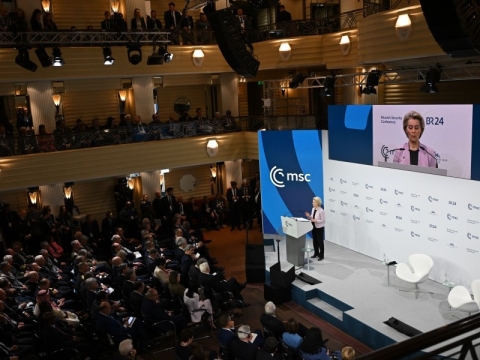Politics
The United States and the European Union are moving away from each other
Due to President Trump's decisions
USPA NEWS -
If there is one thing that the current president of the United States, Donald Trump, will go down in history for, it will be for having broken the bridges that linked his country with Europe. And he has done so in the first weeks of his mandate, under the cover of a dubious and sickly desire to protect, above all, the interests of the United States. The imposition of tariffs, sanctions on allied countries, threats to leave NATO and the arrogance with which he treats his people and the rest of the world, more typical of a Latin American dictator than of a businessman turned politician in the once all-powerful United States, are double-edged swords that are already beginning to turn against the White House.
The president of France, Emmanuel Macron, called an urgent meeting of European leaders to discuss the estrangement between Europe and the United States. This estrangement was already noticeable at the Munich Summit that ended on Sunday. There, European Commission President Ursula von der Leyen gave a speech in which she described a world with competing visions and a more transactional approach to global affairs. She stressed that Europe must change to thrive in this new reality.
As the Commission’s actions in the first weeks of its new mandate have shown, the EU is committed to becoming stronger, more competitive and better prepared to defend itself: “We know that a stronger Europe is better for all of us. A stronger Europe works with the United States to deter the threats we have in common as partners,” said the President. In this regard, she called for avoiding trade wars that would only affect citizens on both sides of the Atlantic, saying that “tariffs act like a tax. They drive inflation. The hardest hit are inevitably workers, businesses and the middle classes. On both sides of the Atlantic. And we know how quickly tariffs can affect essential transatlantic supply chains. We do not believe this is good business.” And we want to avoid a global race to the bottom.”
However, President von der Leyen made it clear that the EU, as one of the world’s largest markets, will respond to unjustified tariffs and focus on protecting its economic interests as well as its workers, businesses and consumers.
In her speech, von der Leyen spoke about the war in Ukraine. She recalled that no one wants peace more than Ukrainians and praised President Volodymyr Zelenskyy’s approach of constantly working for peace. She contrasted this with Vladimir Putin’s approach: “President Putin says he is ready to meet, but on what terms? It is up to him to show that his interest is not to prolong this war. It is up to him to show that he has given up his ambition to destroy Ukraine,” she said.
He warned that a failed Ukraine would weaken Europe and weaken the United States as well, while emboldening authoritarian leaders around the world who are watching closely to see whether invasions and violations of national borders can go unreported. That is precisely why Europe has pledged to support Ukraine. It has provided more than €134 billion, more than anyone else, and that includes $52 billion in military aid, on par with the United States. The EU has imposed unprecedented sanctions on Russia, has weaned itself off its energy dependence and will work to speed up Ukraine’s accession process.
The Commission President stressed that, despite a certain degree of confusion and concern, many of the comments by US officials in recent days are in line with what the EU wants: “Both the EU and the US want an end to the bloodshed. We want a just and lasting peace, leading to a sovereign and prosperous Ukraine. And Ukraine must have strong security guarantees. But perhaps what resonates most with me is the need for Europe not only to speak its mind, but also to act on it.”
Liability for this article lies with the author, who also holds the copyright. Editorial content from USPA may be quoted on other websites as long as the quote comprises no more than 5% of the entire text, is marked as such and the source is named (via hyperlink).






